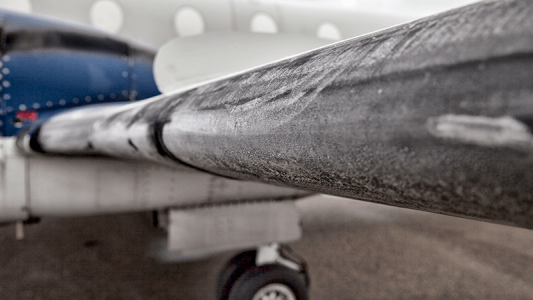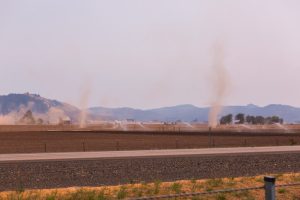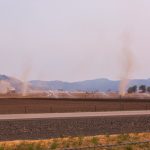Supercooled Large Droplets…If that phrase doesn’t make your skin crawl, then you probably haven’t inadvertently flown into them. The dreaded SLD…You know there is something different about this icing encounter because of the “splat” noise that it makes as the big fat water droplets hit your windshield and instantly freeze. Very unnerving! So what exactly are supercooled droplets, why are they so dangerous to airplanes, and what can you do if you encounter them?
Supercooled Large Droplets are classically defined as “water drops with a diameter greater than 50 micrometers (0.05 mm) that exist in a liquid form at air temperatures below 0 °C; SLD conditions include freezing drizzle drops and freezing raindrops”, or put it in general terms…water droplets 10 – 100 times larger than normal rain drops.
As these large drops collide with an aircraft wing, tail or other surface, they splash or splatter as they freeze, often creating a build up of ice aft of the protected regions. They can also easily overwhelm the ice protection systems of your aircraft, resulting in a severe icing encounter.
Severe icing occurs when the rate of ice accumulation on an aircraft is such that de-icing/anti-icing equipment fails to reduce or control the hazard. Most AFMs address severe icing by advising the pilot to immediately leave the SLD environment. To NOT do so is putting the airplane and all of its occupants in immediate danger.
How To Identify Severe Icing Conditions
There are several clues to look for if you suspect that icing conditions may be approaching severe levels.
- The presence of large water droplets splashing or splattering as they contact the aircraft
- Unusually extensive ice build up aft of the protected areas
- Ice forming on side window panels
- A ridge of ice aft of heated edges or boots
- Ice forming on spinners
- Ice accumulating on control horns, winglets or windshield wipers
The aircraft may also provide some clues that the icing is getting out of control.
- You may notice a loss of airspeed
- Trim may be excessive
- You may need a higher than normal power setting
- You may notice the controls being sluggish or non responsive
What To Do If You Find Yourself In Severe Icing
The only good news about SLD icing is that the conditions creating SLD are usually only about 3000’ thick and typically occur below 12,000’. If you notice any of the above signs of a severe icing encounter, immediately request an altitude change of a few thousand feet. Actually, insist on an altitude change, either up or down. It’s also possible that a heading change may get you out of the severe conditions. Limit flaps, increase your airspeed and if you feel any buffeting or unusual roll tendencies, reduce pitch. Turning off the autopilot and hand flying will also allow you time to notice any unusual control characteristics before they exceed the autopilot capability.
There are some excellent forecasting tools for SLD icing. The “Aviation Weather Center” and “Weather Spork” websites include SLD threats in their aviation forecasts. As always, it’s well worth the effort to do a thorough preflight so you have a clear picture of the atmospheric conditions before you launch on a flight into probable icing. Knowing where the ice is (and isn’t) will help you plan an escape route in case you inadvertently get into icing trouble.










